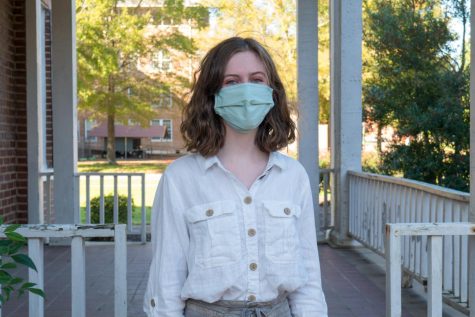Snodgrass: Offensive costuming is blatant disregard for the wellbeing of other cultures
Smallbones, CC0, via Wikimedia Commons
In recent years, many notable people have been called out for their Halloween costumes.
November 5, 2020
Every year as Halloween rolls around, someone inevitably wears a costume that disrespects a group of people. Whether the person is a celebrity, friend, classmate or family member, it is of the utmost importance that we call them out on their potentially harmful actions. Offensive costuming isn’t just a joke and it isn’t harmless; it can contribute to tangible, serious problems, especially with regards to Native and African American peoples.
To begin with, there is no such thing as a “Native American costume.” There are over 570 indigenous tribes in the United States alone, all of which have different cultures and different styles of dress. Lumping them all together into some pan-indigenous costume is cultural erasure, and because of this, any so-called “Native American costume” constitutes appropriation.
Native American women’s costumes like this one are often marketed as “sexy” or perpetuate the “Native beauty” stereotype. This is where a major issue comes into play: the Missing and Murdered Indigenous Women crisis (MMIW). Indigenous women are 2.5 times more likely to experience violence and two times more likely to experience sexual assault than other women, a shocking statistic. When a group of people is constantly sexualized via costume and entertainment, the group becomes objectified over time and thus is at a higher risk for assault. Don’t be a contributing factor to MMIW. Pick a different costume.
There is often confusion about what should be deemed cultural appropriation versus cultural appreciation. In Mississippi especially, it’s a common experience to hear the argument that an appropriator was really just trying to appreciate and honor another culture. A good rule is if you don’t know the cultural significance of an article of clothing (or if you do know and it is culturally or religiously significant), you shouldn’t wear it. This applies to things like Plains Indian headdresses, bindis, eagle feathers (whether real or fake), face paint meant to look like the traditional sugar skulls of Dia de los Muertos and more.
Cultural appreciation can’t occur without understanding, and even if understanding is there, there are always some lines that shouldn’t be crossed. People should reach out to multiple members of a culture they seek to appreciate if they are unsure whether what they are doing is respectful.
Additionally, if the costume being worn is inaccurate, then it cannot honor the culture it is supposed to represent. Any store-bought “cultural” Halloween costume likely falls under this category, so those should be avoided.
Cultural appropriation isn’t the only form of disrespectful costuming. In October of 2000, Charles Edward Beckham III was a senior at MSMS. He and two other students wore KKK costumes to a school-sponsored Halloween event and were subsequently expelled, with good reason. His former classmates described the experience as “shocking” and “horrifying”. Beckham is now a state senator in Arkansas and initially denied ever having participated in such acts of racism and terror, despite official records and accounts from other students, whom the incident had a direct effect on. It caused them to fear for their own safety. He later admitted and apologized for his actions, but only after being confronted with court records. Thankfully the situation was handled appropriately by the administration at the time.
Cultural appropriation and other forms of disrespectful costuming aren’t issues anyone made up to have something to complain about. They are real issues with real, dire consequences for those targeted. Think about the stereotypes you could perpetuate and the harm you could cause before you put on a costume.









